#eastern spot-billed duck
Text
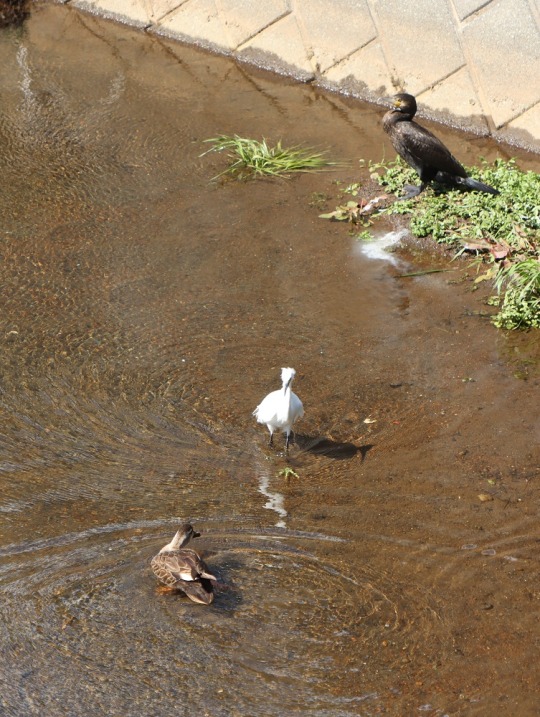
カワウとコサギとカルガモ(3月3日)
Kormoran, kormoran czarny (Phalacrocorax carbo), czapla nadobna (Egretta garzetta) i kaczka chińska (Anas zonorhyncha)
great cormorant (Phalacrocorax carbo), little egret (Egretta garzetta) and eastern spot-billed duck or Chinese spot-billed duck (Anas zonorhyncha)
#birds#ptaki#kormoran#kormoran czarny#Phalacrocorax carbo#czapla nadobna#Egretta garzetta#kaczka chińska#Anas zonorhyncha#great cormorant#little egret#eastern spot-billed duck#Chinese spot-billed duck#japan
3 notes
·
View notes
Text

Indian Spot-Bill, Eastern Spot-Billed Duck (1922-1926) | Allan Brooks | A natural history of the ducks v.2
#ducks#allan brooks#anatidae#anas poecilorhyncha#indian spot billed duck#eastern spot billed duck#anas zonorhyncha
8 notes
·
View notes
Text
my mob psycho 100 furry au COMPLETE i did it
FORTY EIGHT CHARACTERS
THE LIST
mob - eurasian tree sparrow
reigen - "acheroraptor" (microraptor)
dimple - kitty :)
ritsu - house sparrow
teru - aardwolf
tome - jumping bean moth
shou - vermilion flycatcher
serizawa - black myotis bat
tsubomi - thylacine
mezato - black & rufous elephant shrew
toichiro - eastern kingbird
minegishi - kunpengopterus
shimazaki - southern black racer
shibata - zuul (the ankylosaur, not the ghostbusters monster)
hatori - buff old german owl pigeon
joseph - spinner shark
musashi - cow
sagawa - leopard seal
yamamura - horse
kumagawa - great white shark
onigawara - red kangaroo
shimura - volcano hummingbird
inukawa - shiba inu
saruta - nepal gray langur
kijibayashi - ring-necked pheasant
takenaka - dusky dolphin
hoshino - pteranodon
asahi - variable bush viper
kurosaki - tiger leech
kaito & daichi - duck-billed platypus
mitsuura - orange rili cherry shrimp
mogami - carrion crow
shinra - capybara
jodo - chimpanzee
minori - orchid mantis (mobfrog's idea)
kamuro - common raccoon (sammisafetypin's idea)
tokugawa - painted dog (shigayokagayama's idea
roshuuto - numbat (shigayokagayama's idea also)
hoshida - river otter (handsmotif's idea)
emi - white mouth moray eel (localdopplerradar's idea)
sakurai - blue-spotted tree monitor
koyama - green iguana
matsuo - aye aye
mukai - sunda night carpenter bee (torchiclove's idea)
tsuchiya - peregrine falcon
muraki - cape golden mole (once again, thank you leo shigayokagayama)
terada - striped skunk
ishiguro - warty octopus (Graneledone verrucosa)
53 notes
·
View notes
Text
I guess it's time I share my list of birds from this past Jewish year (I've been keeping two Big Year lists, Jewish year and secular year). All are from the US, except the last few which are indicated.
1. Ruby-crowned kinglet
2. American Robin
* Leucistic American Robin
3. Song sparrow
4. Rock pigeon
* Melanistic rock pigeon
5. Chipping sparrow
6. Hairy woodpecker
7. Mourning dove
8. Northern flicker
9. Eastern towhee
10. White crowned sparrow
11. White-throated sparrow
12 Savannah sparrow
13. House sparrow
14. European starling
15. American Crow
16. Common Raven
17. Gray catbird
18. Northern mockingbird
19. Canada Goose
20. Spotted Sandpiper
21. American herring gull
22. Marsh wren
23. Limpkin
24. Great white heron
25. Cattle egret
26. Anhinga
27. Snowy egret
28. Great blue heron
29. Black-crowned night heron
30. Wood stork
31. Common gallinule
32. Blue-gray gnatcatcher
33. Turkey vulture
34. Black vulture
35. Yellow rumped warbler
36. Tufted titmouse
37. Little blue heron
38. White ibis
39. Cooper's hawk
40. Cardinal
41. Green heron
42. Carolina wren
43. Palm warbler
44. Pine warbler
45. Sandhill crane
46. Carolina chickadee
47. Bluejay
48. Osprey
49. Chimney swift
50. Red-tailed hawk
51. Prairie warbler
52. American kestrel
53. Glossy ibis
54. Pied-billed grebe
55. Double-crested cormorant
56. Grey kingbird
57. Brown pelican
58. Fish crow
59. Royal tern
60. Bald eagle
61. Painted bunting
62. American white pelican
63. Common grackle
64. Boat-tailed grackle
65. Great-tailed grackle
66. American purple gallinule
67. American coot
68. Brown-headed cowbird
69. Tricolored heron
70. Mallard
71. Black-bellied whistling duck
72. Eastern kingbird
73. Yellow-billed cuckoo
74. Muscovy duck
75. American bittern
76. Ring-billed gull
77. American Pekin
78. Mallard-Pekin hybrid
79. Eastern bluebird
80. Yellow-bellied sapsucker
81. Red-winged blackbird
82. White-eyed vireo
83. Mottled duck
84. Broad-winged hawk
85. Dark-eyed junco
86. Brown thrasher
87. Sharp-shinned hawk
88. House finch
89. Eastern Phoebe
90. Downy woodpecker
91. Fox sparrow
92. Loggerhead Shrike!!!!
93. White breasted nuthatch
94. Red-bellied woodpecker
95. Brown creeper
96. Pileated woodpecker
97. American goldfinch
98. House wren
99. Barn swallow
100. Tree swallow
101. Black and white warbler
102. Red eyed vireo
103. Yellow warbler
104. Mute swan
105. Rusty blackbird
106. Common yellowthroat
107. Warbling vireo
108. Northern waterthrush
109. Veery
110. Swamp sparrow
111. Wood duck
112. American redstart
113. Orchard oriole
114. Greater Yellowlegs
115. Lesser Yellowlegs
116. Baltimore oriole
117. Hermit thrush
118. Wood thrush
119. Ovenbird
120. Indigo bunting
121. Black-throated blue warbler
122. Scarlet tanager
123. Worm-eating warbler
124. Northern rough-winged swallow
125. Blue-headed vireo
126. Northern parula
127. Prothonotary warbler
128. Philadelphia vireo
129. Blackburnian warbler
130. Magnolia warbler
131. Cedar waxwing
132. Blackpoll warbler
133. Yellow-throated vireo
134. Eastern wood pewee
135. Acadian flycatcher
136. Tennessee warbler
137. Caspian tern
138. Laughing gull
139. Forster's tern
140. American oystercatcher
141. Green-winged teal
142. Purple Martin
143. Least tern
144. Field sparrow
145. Killdeer
146. Grey-cheeked thrush
147. Rose-breasted grosbeak
148. Great-crested flycatcher
149. Swainson's thrush
150. Bay-breasted warbler
151. Chestnut-sided warbler
152. Willow flycatcher
153. Ruby-throated hummingbird
154. Peregrine falcon
155. Hooded crow IL
156. Laughing dove IL
157. Eurasian collared dove IL
158. Eurasian jackdaw IL
159. Common myna IL
160. Rose-ringed parakeet IL
161. White spectacled bulbul IL
162. European bee eater IL
163. Chukar IL
164. Short toed snake eagle IL
165. White stork IL
166. Little egret IL
167. Pygmy cormorant IL
168. Eurasian hoopoe IL
169. Alpine swift IL
170. Graceful pinia IL
171. Eastern Olivaceous Warbler IL
172. Tristan's Starling IL
173. Fan tailed raven IL
174. Eurasian black cap IL
Here's to at least 200 next year!
32 notes
·
View notes
Text
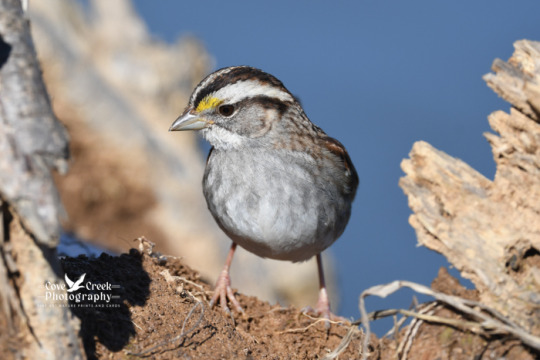
Hello, White-Throated Sparrows!
The hummingbirds have migrated south, ducks are flying overhead, and dark-eyed juncos (Junco hyemalis) began arriving a week ago. Today I spotted a couple of white-throated sparrows. All of this signals that winter is knocking at our door.
Sparrow identification can be tough. Many of our native sparrows look very similar, and often there is no glaring difference in behaviors. However, the white-throated sparrow (Zonotrichia albicollis) may be considered an exception to this identification dilemma.
The time of year is a good clue. White-throated sparrows are migratory, and spend the non-breeding season (late fall and winter) in Arkansas, as well as the rest of the eastern and south-central United States. Their pattern of arrival tends to be what I have observed over the course of the last week. White-throated sparrows start filtering in not long after the arrival of dark-eyed juncos.
Feather color and pattern also aid in identification. A white throat patch (hence the name, white-throated sparrow) between the bill and the gray breast is very apparent. In the "white-striped" form of this species, a white patch on the side of the head highlights a bright yellow spot located between the base of the gray bill and the eye. On the other hand, there is a "tan-striped" form of white-throated sparrow, and the yellow spot is less noticeable and difficult to see because the white patch near the eye is absent. Additionally, a white and black striped crown will be observed in the "white-striped" form, and a brown and black striped crown is present in the "tan-striped" form. I have observed and recorded both forms in Arkansas, in the field and at home. Anecdotally, the "white-striped" form is more prevalent every year.
The call of the white-throated sparrow is described as a song sing a that sounds like "Oh-sweet-canada-canada" or "Old-Sam-Peabody-Peabody". One thing is certain. If you hear its beautiful and distinct call, you'll know white-throated sparrows are around without ever seeing them!
#bird migration#bird photography#birdwatching#nature photography#wildlife photography#photographers on tumblr#songbirds#bird identification#winter#sparrows
20 notes
·
View notes
Text
my 100 birds journey
All species of birds I’ve seen or heard this year:
Gaaviforms:
common loon
Anatidae:
Snow goose
Canada goose
Mallard duck
American black duck
Blue-winged teal
Wood duck
Hooded merganser
Common merganser
Phasianidae:
Ruffed grouse
Spruce grouse
Phalacrocoracidae:
Double-crested cormorant
Ardeidae:
Great blue heron
Cathartidae:
Turkey vulture
Accipitridae:
Bald eagle
Cooper’s hawk
Red-tailed hawk
Northern harrier (probable)
Falconidae:
Merlin
Peregrine falcon
Charadriidae:
Kildeer (heard only)
Scolopacidae:
Spotted sandpiper
Solitary sandpiper
Laridae:
Ring-billed gull
Herring gull
Columbidae:
Rock dove (pigeon)
Mourning dove
Trochilidae:
Ruby-throated hummingbird
Alcedinidae:
Belted kingfisher
Picidae:
Yellow-bellied sapsucker
Downy woodpecker
Hairy woodpecker
Northern flicker (golden form)
Pileated woodpecker
Passeriforms:
Tyrannidae:
Eastern wood-peewee
Alder flycatcher
Least flycatcher
Eastern phoebe
Great crested flycatcher (heard only)
Vireonidae:
Red-eyed vireo
Solitary vireo
Warbling vireo
Corvidae:
Blue jay
American crow
Common raven
Hirundinidae:
Purple martin
Tree swallow
Cliff swallow
Paridae:
Black-capped chickadee (hand-fed!!)
Sittidae:
Red-breasted nuthatch
White-breasted nuthatch
Certhiidae:
Brown tree-creeper
Troglodytidae:
House wren
Winter wren
Regulidae:
Ruby-crowned kinglet
Turdidae:
Veery
Swainson’s thrush
Hermit thrush
Wood thrush
American robin
Mimidae:
Gray catbird
Northern mockingbird
Sturnidae:
European starling
Motacillidae:
American pipit (possible, heard only)
Bombycillidae:
Cedar waxwing
Parulidae:
Tenessee warbler
Nashville warbler
Northern parula
Yellow warbler
Chestnut-sided warbler
Magnolia warbler
Cape May warbler
Black-throated blue warbler
Yellow-rumped warbler
Black-throated green warbler
Blackburnian warbler
Pine warbler
Black and white warbler
American redstart
Ovenbird
Northern waterthrush
Common yellowthroat
Canada warbler
Emberizidae:
Chipping sparrow
White-throated sparrow
White-crowned sparrow
Dark-eyed junco (slate-colored)
Song sparrow
Lincoln’s sparrow (probable)
Swamp sparrow
Savannah sparrow
Cardinalidae:
Northern cardinal
Rose-breasted grosbeak
Icteridae:
Bobolink
Red-winged blackbird
Common grackle
Fringilidae:
Purple finch
House finch
American goldfinch
Passeridae:
House sparrow
3 notes
·
View notes
Note
I love your duck picrew! I have a question what type of duck is the one with purple feathers? A male mandarin duck? What types are the other ducks? :)
thank you! i want to make another one at some point
white: domestic duck (pekin or a white call duck probably)
light brown: apricot call duck
green head: male mallard
colourful with purple feathers: male mandarin duck
reddish brown head: common pochard
brown and cream: eastern spot-billed duck
black and white: i believe it was based on a lesser scaup and i added white detailing around the eye so it would be visible. i don't actually remember because it was 5 years ago and i did take some artistic liberties because i was not very good at drawing different kinds of ducks back then
completely black/dark brown: blue billed duck
yellow: this is not based on a real duck. someone i knew asked me to include a yellow duck option. i don't think there are any ducks that look like this in the wild as adults. (ducklings are often yellow though obviously)
#hexa.txt#asks#disclaimer i made the picrew at the beginning of my duck special interest#so i was mostly looking at pictures of domestic call ducks on instagram 24/7#i only expanded into wild ducks later. which is why the colorations for these ducks is not very accurate
1 note
·
View note
Text
Birding Hotspot: Shelby Park and Bottoms, Nashville, Tennessee, USA
Links:
[illustrated eBird hotspot page]
[Nashville.gov - Shelby Park]
[Google Maps]

Another prime birding spot in the Nashville urban expanse, the Shelby area is a large greenspace (1200 square acres) along the Cumberland River. Effectively split in two by a railroad bridge, the Shelby Park side contains picnic shelters, baseball fields, and a man-made lake, and up the hill there is a community center, basketball and tennis courts, a playground, and dog park; the Bottoms features a greenway (very popular with joggers and bicyclists), and unpaved nature trails.
The Shelby area comprises 9 separate eBird hotspots, and for data precision, it's best to select the one closest to you when starting off. The most popular ones are Shelby Bottoms Nature Center (which contains the observation field, Froggy Bottoms, and Hidden Pond), Sevier Lake, and Cornelia Fort Airpark.
Hotspot amenities:
The Bottoms is where you'll find the nature center. There are restrooms (the ones in the building itself are kept very clean), and there is plenty of parking all around, though the occasional 5k run or baseball tournament will take place and things can get quite busy. Next to the nature center is a sandy play area for kids.
There is a one-mile loop trail that takes you from the nature center and around to the observation deck. The path is paved, and the deck is wheelchair accessible. The paved greenway continues northward for a few miles toward the other areas of the park.
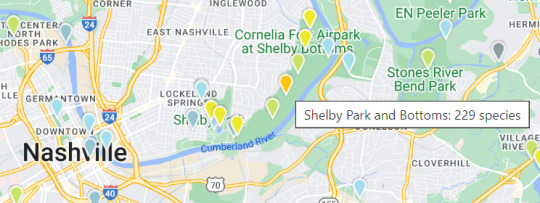
Observation Field - In the summertime, this is a vibrant location, as wildflowers have taken over the field, drawing butterflies, bees, dragonflies, and plenty of wedding photographers. Various warblers (especially Common Yellowthroats), Eastern Bluebirds, American Goldfinch, Indigo Buntings, Summer Tanagers, and Orchard Orioles are all common at this time of year. Over the winter, the Red-Shouldered Hawks remain, typically holding fort in the trees lining the field, and occasionally American Kestrel and Wild Turkeys will show up. Look up above you, and you'll definitely see Black Vultures circling around—sometimes they'll gather in the nearby electrical towers by the dozens.
There is a one-mile loop trail that takes you from the nature center and around to the observation deck. The path is paved, and the deck is wheelchair accessible. The paved greenway continues northward for a few miles toward the other areas of the park.

Froggy Bottoms (zig-zag bridge) - Not too far from the observation deck (and part of the one-mile loop) is an area of swampland created by local beavers (the trails used to follow around a stream, but that was blocked up and the area flooded). The dead trees host woodpeckers (most commonly Northern Flickers). Wood Ducks and Blue-Winged Teal are known to nest here, and you might see them swim by with ducklings in tow.

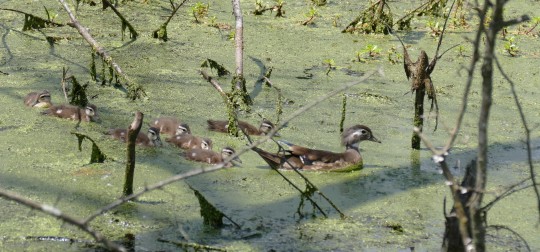
Hidden Pond - Adjacent to the observation field, this is a beaver pond that can be at dramatically different levels based on the season; summers have been quite dry the last few years as we've seen drought, and the pond nearly dries up; in wintertime it will be full. Ducks, Great Blue Herons, Green Herons, Belted Kingfishers, Pied-Billed Grebe, and the occasional small shorebird will make an appearance. Sparrows will also be plentiful. You'll see plenty of evidence of beavers—their lodges, and trees they've chopped down—and possibly the beavers themselves (including pups).

Sevier Lake - This is a small man-made lake on the Park side that is stocked for fishing. Phoebes and Swallows will be seen darting out over the lake, you'll catch a decent variety of ducks, often a Double-Crested Cormorant, almost always a Great Blue Heron, along with resident populations of Mallards and Canada Geese (and over the last 2 years or so, a resident population of Fish Crows has developed). You may also see an Osprey hanging out in the sky above, especially after stocking. In the marshland at the end of the pond, you'll find Red-Shouldered Hawks. The hills on the community center side are known for warblers.
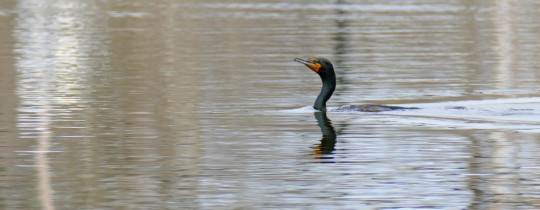
Cornelia Fort Airpark - At the North end of the Bottoms is an old municipal airfield that is no longer operational—its runways are now used by walkers, joggers, rollerbladers, bicyclists. In the grasses along the runway, Eastern Meadowlarks are likely hiding. Blue Jays will be occupying the trees. In recent year, Bald Eagles have been nesting (look up into the tallest tree at the corner of the farmer's field and you should see the nest; it's massive). Hawks are common, and the occasional Northern Harrier will scan the fields. Waterfowl (ducks, geese, herons, shorebirds) can be found in the ponds past the cow fencing.
[Update: The farm is no longer operational, electric fences have been removed, and the land is now available to the public. At the moment there are no restrictions to the area, but there may be an effort to restrict or buffer certain grassland, shore, and wooded areas for nature preservation purposes (e.g., nesting birds, including the Bald Eagles). Already, two sparrows very rare to the Nashville area have been sighted and photographed by birders—Henslow's Sparrow and the Grasshopper Sparrow (by me!).]
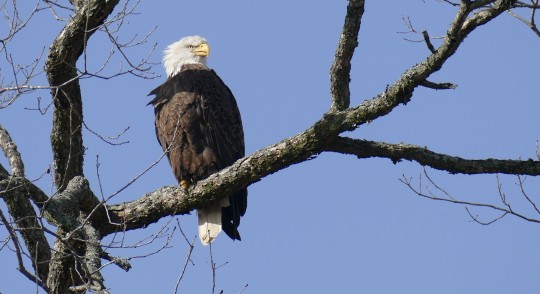
(all photos by @everydayesterday)
#birds#birding#birdwatching#ornithology#birblr#birdblr#shelby park#shelby bottoms#nashville#tennessee#ebird#bald eagle#mallard#green heron#wood duck
0 notes
Text
The Plural of Platypus: A Complete Guide

The plural of platypus has been a topic of debate for many years. There are two commonly used forms: platypuses and platypi. However, the correct plural form is platypuses. While some may argue that platypi is more in line with Latin-derived plurals, the word "platypus" is actually of Greek origin, combining "platys" (meaning flat) and "pous" (meaning foot). Therefore, the plural form follows the English convention of adding an "es" to the end of the word. The pronunciation of platypuses is "pla-tuh-puh-siz."
The Singular and Plural of Platypus
- Singular: Platypus
- Plural: Platypuses / Platypi / Platypodes
The plural form of 'platypus' is interesting due to the three variations commonly used: 'platypuses,' 'platypi,' and 'platypodes.' While 'platypuses' adheres to the standard English method of adding '-es' to form plurals, 'platypi' and 'platypodes' are born from different linguistic roots. 'Platypi' is influenced by Latin, whereas 'platypodes' stems from Greek origins. The use of these plural forms varies in different regions and contexts.
Understanding Platypus
Definition of Platypus
The platypus (Ornithorhynchus anatinus) is a semiaquatic egg-laying mammal endemic to eastern Australia, including Tasmania. It is known for its duck-bill, beaver-like tail, otter-like body, and webbed feet. The platypus is one of the few mammals known to produce venom.
Usage of Platypus
In a zoological context, 'platypus' refers to the animal itself. In a broader linguistic sense, the word represents an example of how English pluralization can be complex and influenced by words' etymological roots. It's also used metaphorically to describe something unusual or a combination of disparate elements.
Use of Platypus in Sentences
- Singular: "The platypus is known for its unique ability to detect electrical signals from its prey.
- Plural (Platypuses): "A group of platypuses was spotted swimming near the riverbank at dawn."
- Plural (Platypi): "In the documentary, the narrator focused on the mating habits of platypi in the wild."
- Plural (Platypodes): "The habitat of platypodes is threatened by climate change and pollution."
- Metaphorical: "His new invention is like a platypus; it combines elements from different domains to create something entirely new."
Common Mistakes and Confusions
- Incorrect Pluralization: Using 'platypus' as both singular and plural is a common mistake. Remember, the plural can be 'platypuses,' 'platypi,' or 'platypodes.'
- Mispronunciation: 'Platypi' is often mispronounced. The correct pronunciation is plat-uh-pie.
- Misunderstanding Origins: Confusing the Greek and Latin roots can lead to incorrect usage of 'platypodes' and 'platypi.'
Commonly Asked Questions
Q: Is 'platypuses' or 'platypi' the correct plural form? A: Both are considered correct, but 'platypuses' is more commonly used and accepted in modern English.
Q: Can 'platypus' be used as a plural form? A: While some people use 'platypus' as both singular and plural, it is more grammatically accurate to use 'platypuses,' 'platypi,' or 'platypodes' for the plural.
Q: Why are there multiple plural forms for 'platypus'? A: This variation arises from the word's etymological roots and the influence of Latin and Greek on English.
Conclusion
Understanding the plural forms of 'platypus' offers more than just a grammatical exercise; it provides insight into the dynamic and evolving nature of language. Whether you prefer 'platypuses,' 'platypi,' or 'platypodes,' each form reflects the rich tapestry of linguistic influences that shape the words we use. Remembering the correct usage and plural forms of 'platypus' not only enhances our linguistic precision but also deepens our appreciation for the diversity and complexity of English.
FAQ
What is the plural form of platypus?
The correct plural form of platypus is "platypuses."
Why is the plural not "platypi"?
While some may argue that "platypi" is more in line with Latin-derived plurals, the word "platypus" is actually of Greek origin. It combines "platys" (meaning flat) and "pous" (meaning foot). Therefore, the plural form follows the English convention of adding an "es" to the end of the word.
What are the distinctive features of a platypus?
Platypuses possess a flat, duck-like bill, webbed feet, and a flat tail.
Do platypuses lay eggs?
Yes, platypuses are one of the few mammals that lay eggs.
Do male platypuses produce venom?
Yes, male platypuses have venomous spurs on their hind legs, which they use for defense and establishing dominance during mating season.
How are platypuses different from other mammals?
Platypuses have a unique combination of mammalian, reptilian, and avian traits. They lay eggs and produce venom, making them distinct from other mammals.
What do platypuses eat?
Platypuses primarily feed on small insects, crustaceans, and other aquatic animals.
Why are platypuses considered vulnerable?
Platypuses are considered vulnerable due to the destruction of their natural habitats, pollution, habitat fragmentation, and climate change. These factors pose significant threats to their population.
How can we protect platypuses?
Conservation efforts focus on preserving their habitats, implementing pollution control measures, and raising awareness about their ecological importance. Prioritizing the conservation of this unique species is crucial for their long-term survival.
Read the full article
0 notes
Text
Discover the Adorable Avian Wonders: Top 10 Cutest Birds in the World
There’s no denying that birds are some of the most adorable creatures in the world. From their bright plumage to their melodious songs, these creatures never fail to delight. But some birds are just a cut above the rest when it comes to cuteness. Here are 10 of the cutest birds in the world.
1. African pygmy kingfisher
This little bird is found in woodlands and forests throughout sub-Saharan Africa. Measuring just 6-7cm long, the African pygmy kingfisher is one of the smallest kingfishers in the world. It has a bright blue back and wings, with a white belly and orange breast. Its tiny bill is black, with a yellow lower mandible.
2. Blue-footed booby
The blue-footed booby is a seabird that is found on the coasts of the Pacific Ocean. It gets its name from its striking blue feet, which are used to attract mates. The rest of the bird’s plumage is white, with a black tail and wings. Adults can reach a length of 70cm.
3. Atlantic puffin
The Atlantic puffin is a seabird that is found in the North Atlantic Ocean. It has a black back and wings, with a white belly and a grey head. Its most distinctive feature is its large, colourful bill. Atlantic puffins can reach a length of 30cm.
4. Red-crested pochard
The red-crested pochard is a duck that is found in Europe, Asia and Africa. It has a red head and neck, with a black body and white belly. Its most distinctive feature is its red crest, which is used to attract mates. Red-crested pochards can reach a length of 50cm.
5. Blue-and-yellow macaw
The blue-and-yellow macaw is a parrot that is found in the rainforests of Central and South America. It is one of the largest macaws, with a length of up to 100cm.
6. The Budgerigar
Also known as a budgie, the budgerigar is a small, seed-eating parakeet that is native to Australia. Budgies are one of the most popular pets in the world, and it’s easy to see why! With their bright plumage and playful personalities, these little birds are sure to bring a smile to your face.
7. The Puffin
The puffin is a small, stocky seabird with a brightly-colored beak. These adorable birds are found in the North Atlantic Ocean and are known for their comical appearance and friendly nature. Puffins mate for life and often build their nests on cliff sides, making them a popular bird to spot while on a hike or nature walk.
8. The Hummingbird
The hummingbird is a small bird that is native to the Americas. These fascinating birds are known for their ability to fly backwards and their incredibly fast wing-flapping speed. Hummingbirds are also the only birds that can hover in mid-air, making them a delight to watch as they feed on nectar from flowers.
9. Tufted Titmouse
The tufted titmouse is a small songbird with a gray body and white breast. Its most distinguishing feature is the black “tuft” of feathers on its head, which gives it its name. Tufted titmice are found in woodlands throughout the eastern United States and are known for their cheerful songs.
10. Rainbow Lorikeet
The rainbow lorikeet is a brightly colored parrot native to Australia and New Guinea. Rainbow lorikeets are easily recognizable by their vivid plumage, which features a variety of colors including blue, green, red, and yellow. These beautiful birds are also known for their loud screeching calls.
Fastest cat in the world
longest over water bridge in usa
famous volcano in the world
best video call app for android
Top 10 Tale
0 notes
Photo
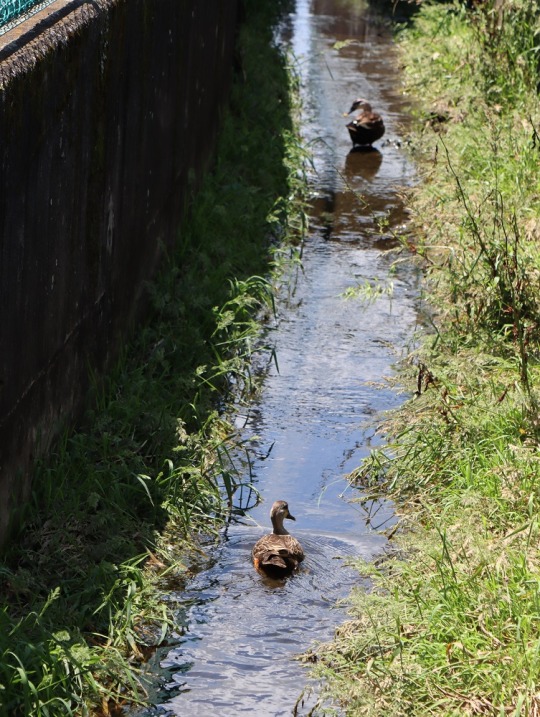
水路でカルガモのペアがお散歩してた(5月24日)
#Anas zonorhyncha#eastern spot-billed duck#Chinese spot-billed duck#birds#ptaki#japan#waterway#kanał
3 notes
·
View notes
Text
oh yeah, that ask reminded me- since i typed out the whole list for artfight, here's all of my mp100 furry assignments ! theres still a small handful i need to figure out, but this is most of em :]
mob - eurasian tree sparrow
reigen - "acheroraptor" (microraptor)
dimple - kitty :)
ritsu - house sparrow
teru - aardwolf
tome - jumping bean moth
shou - vermilion flycatcher
serizawa - black myotis bat
tsubomi - thylacine
mezato - black & rufous elephant shrew
toichiro - eastern kingbird
minegishi - kunpengopterus
shimazaki - southern black racer
shibata - zuul (the ankylosaur, not the ghostbusters monster)
hatori - buff old german owl pigeon
joseph - spinner shark
musashi - cow
sagawa - leopard seal
yamamura - horse
kumagawa - great white shark
onigawara - red kangaroo
shimura - volcano hummingbird
inukawa - shiba inu
saruta - nepal gray langur
kijibayashi - ring-necked pheasant
takenaka - dusky dolphin
hoshino - pteranodon
asahi - ?
kurosaki - ?
kaito & daichi - duck-billed platypus
mitsuura - ?
mogami - carrion crow
shinra - capybara
minori - ?
kamuro - ?
tokugawa - ?
roshuuto - numbat
hoshida - river otter
sakurai - blue-spotted tree monitor
koyama - green iguana
matsuo - aye aye
mukai - ?
tsuchiya - ?
muraki - ?
terada - striped skunk
ishiguro - an octopus of some kind probably
10 notes
·
View notes
Text
Proud to announce that I spotted 60.5 species of birds in my week trip to Florida (copied-and-pasted from my Big Year google doc, so the FA stands for Florida):
Marsh wren FA
Limpkin FA
Great white heron FA
Cattle egret FA
Anhinga FA
Snowy egret FA
Great blue heron FA
Black-crowned night heron FA *was on a boardwalk trail and saw a bunch of people crouching down and looking at something and I thought they saw another gator (on this trip we saw 32 gators in total) but it was something better! A bird! And then I saw another one the next day hiding under brush.
Wood stork FA
Common moorhen FA
Blue-gray gnatcatcher FA
Turkey vulture FA *was looking for wild turkeys and unfortunately didn't see any this trip but one of these guys was stalking on the side of the rode and for a second we got exciting thinking it was an actual turkey.
Black vulture FA
Yellow-rumped warbler FA
Tufted titmouse FA *my grandma's favourite bird
Little blue heron FA
White ibis FA *we were ambushed by them because people at the park would feed them so they expected us to feed them but we wouldn't so they just surrounded us and we thought they would attack us but they didn't.
Cooper's hawk FA
Cardinal FA
Green heron FA *my grandpa was walking a little ahead of me and whispered for me to come and there was this gorgeous green fishing. Moved so slowly and gently that he didn't make a sound, it was incredible.
Carolina warbler FA
Pine warbler FA
Sandhill crane FA
Carolina chickadee FA
Bluejay FA
Osprey FA
Chimney swift FA
Red-tailed hawk FA *saw this lovely lady perched on a fence as we drove out of my grandparents' neighbourhood
Prairie warbler FA
American kestrel FA
Glossy ibis FA
Pied-billed grebe FA
Double-crested cormorant FA
Grey kingbird FA
Brown pelican FA *we weren't anywhere near the ocean but a storm was likely brewing and huge flocks of brown pelicans and white pelicans flew inland
Fish crow FA
Royal tern FA
Bald eagle FA
Painted bunting FA *didn't think I'd see one this trip because the nature garden we went to last year that had a lot of birds, including the painted bunting we saw last year, had too many people this time around so there weren't many birds. But then I saw a painted bunting at a different trail and literally forgot to be quiet and freaked out.
American white pelican FA
Common grackle FA
Boat-tailed grackle FA *did you know that these grackles make a clicking sound when they see humans or predators that sounds like a turkey gobble sound? I didn't until these guys wouldn't stop yelling at my while I was just trying to rest my legs on a bench.
American purple gallinule FA *gorgeous birds. gorgeous.
American coot FA
Brown-headed cowbird FA
Tricolored heron FA
Mallard FA
Black-bellied whistling duck FA
Eastern kingbird FA
Yellow-billed cuckoo FA
Muscovy duck FA
American bittern FA *my grandma and I saw this one and at first thought it was a green heron but then realized it wasn't haha.
Ring-billed gull FA
Feral American Pekin FA
Mallard-Pekin hybrid FA *spent so much time trying to identify these weird ducks until I went on my laptop later that evening and read up way too much on duck genetics and realized that they were hybrids. They were probably second-generation hybrids from my brief scan of pedigree charts of ducks, meaning their grandparents were a mallard and a pekin, but their parents were a hybrid and a pekin.
Eastern bluebird FA
Yellow-bellied sapsucker FA *went to a park my grandparents recommended and there weren't really any new birds there and my legs hurt from walking but then I heard this guy tapping around in a tree and there he was. Still wouldn't recommend this park.
Red-winged blackbird FA *was complaining to my grandpa that I hadn't seen any red-winged blackbirds yet and my trip was almost over when a bunch of these guys literally flew down in front of us.
White-eyed vireo FA
Mottled duck FA
Broad-winged hawk FA *saw this guy as my plane was literally taxiing out of the runway to go home. I was looking out my window cause I was nervous and there he was! Just perched on a sign!
22 notes
·
View notes
Photo

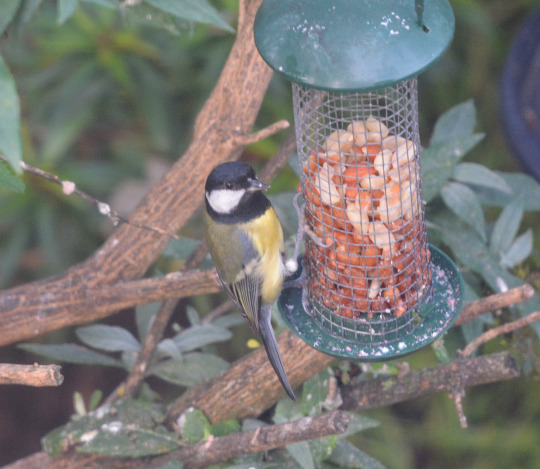
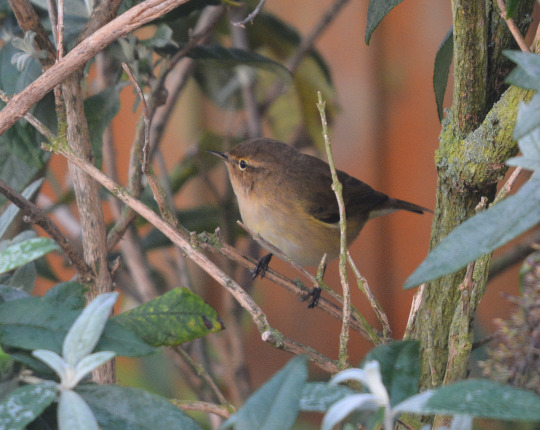

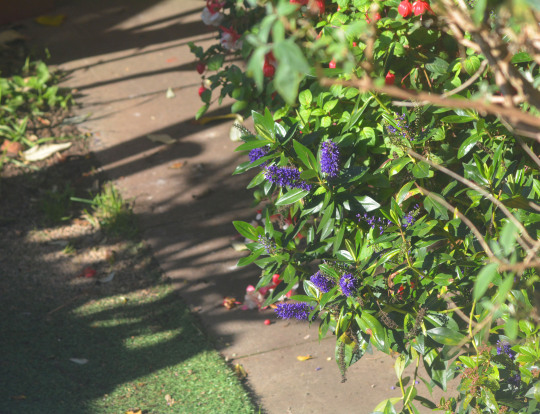

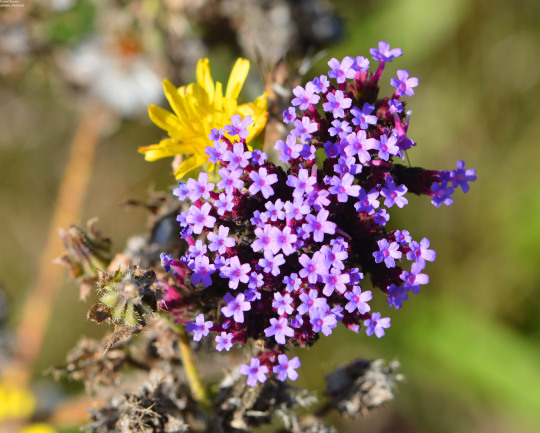

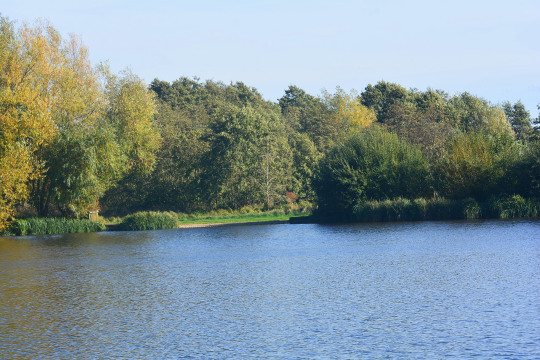

17/10/2022-Brilliant day of birds out the back and more at home and Lakeside lunch time walk
I had an extraordinary few minutes this morning when firstly I enjoyed seeing a Great Tit again in the garden, quite a notable species for our garden. I liked hearing and seeing it and was thrilled I got a photo this time, the second in this photoset. A Goldfinch and then in the end two Blue Tits very quickly joined it, as I mentioned the other week in this post: https://dansnaturepictures.tumblr.com/post/696213741585514496/23092022-lakeside-and-home-i-was-pleased-to-see seeing Blue Tit and Great Tit in the garden on the same day was quite something for me so to see them at once was thrilling. Then a Robin which I’d not often seen lately in the garden was around there always seems to be one come into the garden as we head through autumn into winter possibly the same one each year.
Then it was amazing to hear the short one note alternative call of a Chiffchaff and then see it come in the garden! It flitted around the buddleia bush for a while. I was so happy to see this cute and charming bird, a species so symbolic of spring time which is resident here these days but it’s a bird you don’t expect to get in the garden really you associate them with a certain habitat. It’s the second time I’ve seen one in the garden after October 2020 it’s fascinating one has come in again in October. I have seen a fair few at Lakeside lately so it’s not a great hop from there to home. I got the third picture in this photoset of this bird. As the morning went on and into early afternoon I caught sight of some late hirundines gliding past I believe Swallow, not something I see often from home in itself. A Buzzard was soaring over out the back too. I got exquisite views of House Sparrow and Goldfinch on the balcony feeding before I went for my lunch time walk in the bright sunlight the Goldfinch’s feathers did shine gold in the gorgeous sun.
At Lakeside seeing my first Tufted Duck there for a little while and a Kestrel in the air were key bird moments on my lunch time walk. I took the first picture in this photoset of a Magpie one I am seeing so well at home of late on the ground out the back and I saw one looking lovely in a hawthorn bush which I took and tweeted tonight on Dans_Pictures a photo of at Lakeside at lunch time.
On another gloriously sunny Monday I have had a few lately to walk at Lakeside at lunch time I got some brilliant views of dragonflies. Marvelous Migrant Hawkers were smashing to see as they dashed by, one was eye to eye to me and it was great to see their mint blue spots on the black, such pristine insects. I saw Common Darter too. I enjoyed seeing a Speckled Wood butterfly quickly by the north eastern kissing gate entrance late on the walk on what turned into a warm lunch break.
Some pleasant looking tall vervain I believe as the seventh picture in this photoset shows in the garden area by the visitor centre with hawksbeard type flowers, purple deadnettle just across the road, thistle on the green outside of Lakeside and the meadow crane’s-bill I enjoyed on Friday were lovely flowers to take in at lunch time. Black-eyed Susan, fuchsia and hebe the latter especially looking nice again the fifth picture I took today in this set shows both of these, sweet William, buddleia as the fourth picture in this photoset shows and yellow flowers on the balcony were great plant sights in the sun at home today. I saw some fantastic mushrooms at Lakeside in a clump in the southern fenced off area, common ink cap I believe they are pretty.
Colours really defined my day too; the sensational blue of the water and sky, so much green in the landscape still, the yellow and red of autumn leaves at Lakeside especially and home too I felt inspired and embraced by the seas of autumnal colour creating a glorious display it feels like a pivotal moment this year when the colour bursts onto the scene the colours look so sublime against the bright blue sky too and the bright orange and red of sunset which was captivating again at home tonight. I took the sixth, eighth and ninth pictures in this photoset of colourful views at Lakeside and on the way at lunch time and tenth and final picture in this photoset of the beautiful sunset. It was nice to see a moon out in the clear blue sky at Lakeside too. There were such great autumnal angles of sunlight which I cherished seeing on the walk today. There are certain trees in colour some I have noticed before others not so much at Lakeside that I’m getting nicely used to seeing. A great start to the week of seeing things at home and lunch time walks.
Wildlife Sightings Summary: Two of my favourite birds the Great Crested Grebe and Buzzard with the former seen well lit so well by the sun at Lakeside, Coot, Moorhen, Greylag Goose, Mallard seen well, Tufted Duck, Black-headed Gull, Kestrel, Collared Dove seen well and in great bright light on the roof out the back at home, Woodpigeon, Magpie, Jackdaw seen well at home too, Robin, Goldfinch, Blue Tit, Great Tit, Chiffchaff, House Sparrow, Starling, Speckled Wood, Migrant Hawker, Common Darter, the White-shouldered House moth seen well in my room tonight and spiders at home.
#migrant hawker#common darter#great crested grebe#buzzard#lakeside#lakeside country park#coot#moorhen#greylag goose#mallard#tufted duck#kestrel#collared dove#magpie#woodpigeon#jackdaw#robin#goldfinch#blue tit#house sparrow#chiffchaff#starling#speckled wood#white shouldered house moth#moth#butterfly#dragonfly#spider#spiders#sunny
1 note
·
View note
Text

Anate becco maculate, Eastern Spot-Billed Duck (1922-1926) | Allan Brooks (canadiano, 1869-1946)
0 notes
Photo
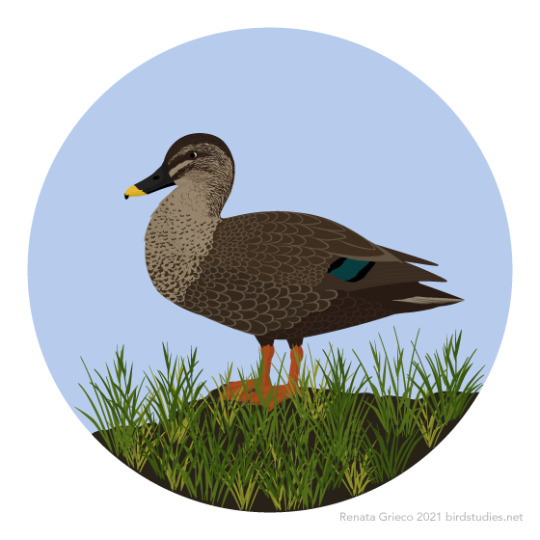
March 19, 2021 - Eastern Spot-billed Duck or Chinese Spot-billed Duck (Anas zonorhyncha)
Found in inland and coastal wetlands in East and Southeast Asia, these ducks were previously considered a subspecies of the Indian Spot-billed Duck. Their diet is made up of seeds, grasses, and aquatic vegetation. Their breeding season varies based on local weather and rainfall, but is usually between April and July. They build nests on the ground near water, where females lay between seven and nine eggs.
56 notes
·
View notes